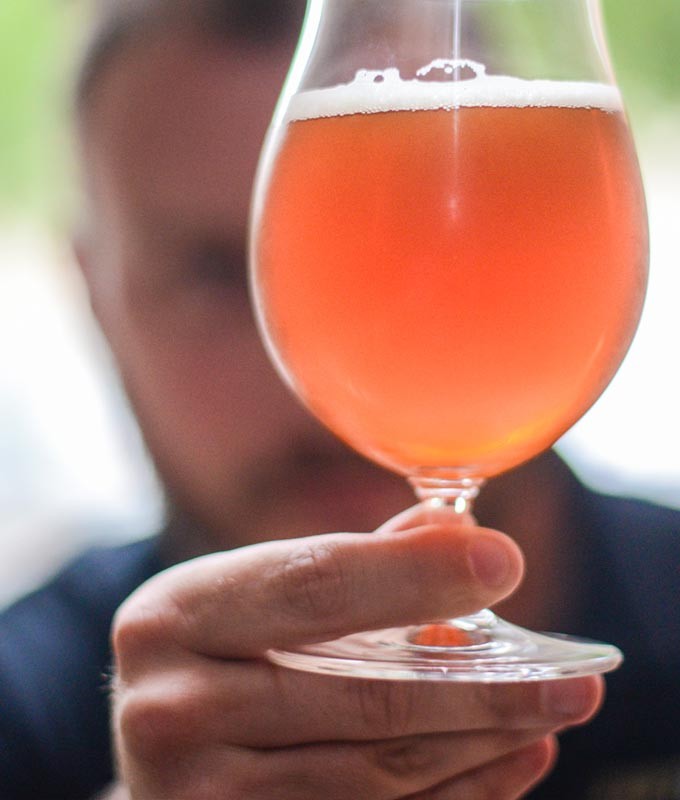
Did you detect an off-flavor in a recent homebrew? Don’t worry just yet!
There are a number of off-flavors in beer that are acceptable at certain levels in certain styles, and in some instances may even be desirable according to the Beer Judge Certification Program. Let’s take a look at three common off-flavors that may be allowable, but keep in mind there are other instances where off-flavors are an acceptable trait.
Notes: All the styles mentioned below are based on the 2015 BJCP Style Guidelines.
Acetaldehyde
Have you ever noted cider or green apple aroma in your beer? Chances are the compound acetaldehyde is present, which is formed during fermentation as a precursor to alcohol. While it typically increases during fermentation and then decreases during conditioning and aging, sometimes it sticks around for good. Often it is a sign that beer is still young, or the fermenting beer was removed from the yeast too early not allowing a full and adequate fermentation.
However, in some instances acetaldehyde is an acceptable component of a beer’s aroma. American light lager, American lager, international pale lager and kellerbier can all exhibit low levels of apple-like quality in the aroma and still be considered to-style. In this instance, the apple aromas are categorized as yeast character and can be quite desirable in a clean-fermented American lager, though an example of any of these styles without apple aromas is acceptable as well. Lagering often times remedies beers with lots of acetaldehyde character, but sometimes a bit is left and that’s okay.
Diacetyl
The hallmark of a dreaded “diacetyl bomb,” as beers stricken with a bad case of the off-flavor are referred to by beer judges, is an aroma and flavor reminiscent of buttery, movie theater popcorn. Diacetyl is most commonly caused by stressed yeast that leak the compound during amino acid synthesis and ultimately cause the butter character to prevail. In other instances, diacetyl can also be a sign of bacterial infection or simply dirty keg lines.
Diacetlyl can also come across as butterscotch-y, though rarely are overt examples of the compound’s flavors and aromas desired. That being said, there are many styles that allow small amounts of diacetyl, including Czech lagers, bitters, some stouts and porters and Scottish/Irish ales. In the case of Flanders red ale and Oud Bruin, small amounts of the buttery aroma are actually acceptable, and to some desirable, to compliment the complex, sour-fruity nose.
Dimethyl Sulfide (DMS)
Dimethyl Sulfide, more commonly referred to as DMS, is an aromatic and off-flavor that comes across as a vegetal quality. In lower levels, DMS creates a sweet, cooked corn character. At higher levels, it starts to tread into something reminsicent of celery and cabbage, and can even start to take on shellfish-like qualities.
DMS is created when S-methyl-methionine (SMM) is reduced during the boil. SMM is most common in pale malts, since it is reduced during the malting process. The DMS is evaporated off during the boil, which is why it is crucial to not cover the boil kettle, and in some cases to extend the boil beyond an hour. In other instances, DMS can be a sign of poor sanitation, contaminated and/or underpitched yeast and oversparging with water that is too cool.
Since SMM, the DMS precursor, is more prevalent in paler malts, beers brewed with large quantities of pilsner malt are particularly susceptible to DMS character forming in your homebrew. Lagers include large percentages of pilsner malt and DMS is allowable in small quantities, though not necessarily required, in many cold-fermented styles. American and international lager styles, as well as some helles and pilsners, may exhibit low levels of DMS in the aroma and in some isntances the flavor, which some prefer, but generally these styles are suggested to be as clean fermented and free of DMS as possible.
http://www.homebrewersassociation.org/how-to-brew/acceptable-off-flavors-in-beer-and-homebrew/
Sources: Tasting Beer by Randy Mosher; 2015 BJCP Style Guidelines; 2008 BJCP Style Guidelines; BJCP.org.
No comments:
Post a Comment